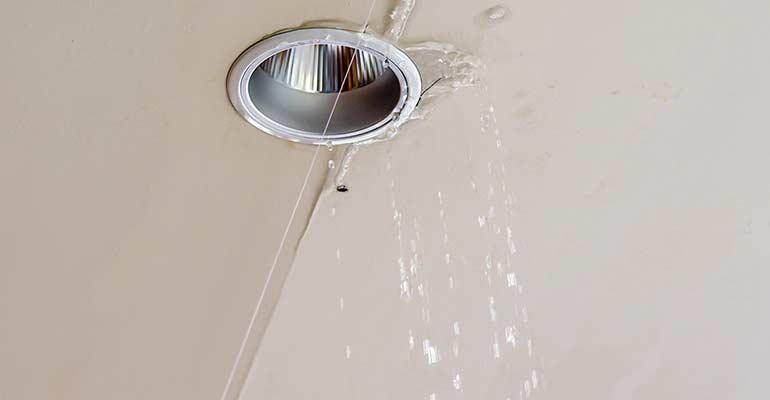Identify the Top Triggers for Water Leakage in Your Home
Identify the Top Triggers for Water Leakage in Your Home
Blog Article
This post down below involving How Fast Water Damage Can Ruin Your Home is totally engaging. Don't skip it.

Leakages not only cause waste of water but can additionally trigger unneeded damage to your home and promote undesirable natural growth. By comprehending and looking for daily situations that create leakages, you can safeguard your house from future leakages and unneeded damages.
Instantaneous temperature adjustments.
Extreme temperature changes in our pipelines can create them to increase and contract suddenly. This growth as well as contraction may cause splits in the pipelines, specifically if the temperature level are below freezing. It would certainly be best if you watched on exactly how your plumbing functions. The presence of the previously mentioned situations frequently shows a high risk.
Corroded water systems
This might be the cause of discoloration or warping on your water pipes. If our plumbing system is old, think about changing the pipelines because they are at a greater danger of rust than the newer versions.
Faulty Pipeline Joints
Pipe joints can degrade over time, resulting in water leaks. If you have noisy pipes that make ticking or banging sounds, specifically when the warm water is turned on, your pipeline joints are probably under a lot of pressure.
Encroaching origins
Most water leakages begin outside the residence rather than inside it. You might observe damp spots or sinkholes in your yard, and that may indicate that tree origins are attacking water lines creating water to permeate out.
Poor Water Connectors
At times, a leakage can be created by loose hose pipes as well as pipelines that supply your home appliances. In instance of a water connections leakage, you might see water running directly from the supply line or pools around your appliances.
Blocked Drains
Blocked drains might be bothersome and inconveniencing, yet they can occasionally end up triggering an overflow bring about burst pipes. Keep eliminating any kind of products that might drop your drains that could clog them to avoid such hassles.
All the above are root causes of leaks yet not all water leakages arise from plumbing leaks; some leaks might come from roof leaks. All leakages need to be fixed promptly to prevent water damage.
Leakages not just trigger waste of water but can additionally trigger unnecessary damages to your house and promote undesirable natural growth. By looking and understanding for day-to-day situations that trigger leaks, you can safeguard your home from future leakages as well as unneeded damages. Today, we will look at 6 leakage causes that might be creating your pipes to drip.
At times, a leakage can be caused by loosened hoses and pipelines that supply your appliances. In instance of a water connections leakage, you may observe water running straight from the supply line or pools around your devices.
How To Check For Water Leak In Your Home
How To Check for Leaks
The average household's leaks can account for nearly 10,000 gallons of water wasted every year and ten percent of homes have leaks that waste 90 gallons or more per day. Common types of leaks found in the home are worn toilet flappers, dripping faucets, and other leaking valves. These types of leaks are often easy to fix, requiring only a few tools and hardware that can pay for themselves in water savings. Fixing easily corrected household water leaks can save homeowners about 10 percent on their water bills.
To check for leaks in your home, you first need to determine whether you're wasting water and then identify the source of the leak. Here are some tips for finding leaks:
Take a look at your water usage during a colder month, such as January or February. If a family of four exceeds 12,000 gallons per month, there are serious leaks.
Check your water meter before and after a two-hour period when no water is being used. If the meter changes at all, you probably have a leak.
Identify toilet leaks by placing a drop of food coloring in the toilet tank. If any color shows up in the bowl after 10 minutes, you have a leak. (Be sure to flush immediately after the experiment to avoid staining the tank.)
Examine faucet gaskets and pipe fittings for any water on the outside of the pipe to check for surface leaks.
Undetected water leaks can happen without the home or business owner even realizing. If you suspect a water leak, but not able to find the source. It is time to contact a professional water leak detection service, The Leak Doctor.
How To Find a Water Leak In Your Home
https://www.leakdoctor.com/blog/How-To-Check-For-Water-Leak-In-Your-Home_AE197.html

Hopefully you enjoyed our section about Common Water Leaks In House. Thank you so much for finding the time to read through our piece. For those who appreciated our page please be sure to share it. Thanks a bunch for your time. Don't forget to come visit our website back soon.
Quick response? Dial! Report this page